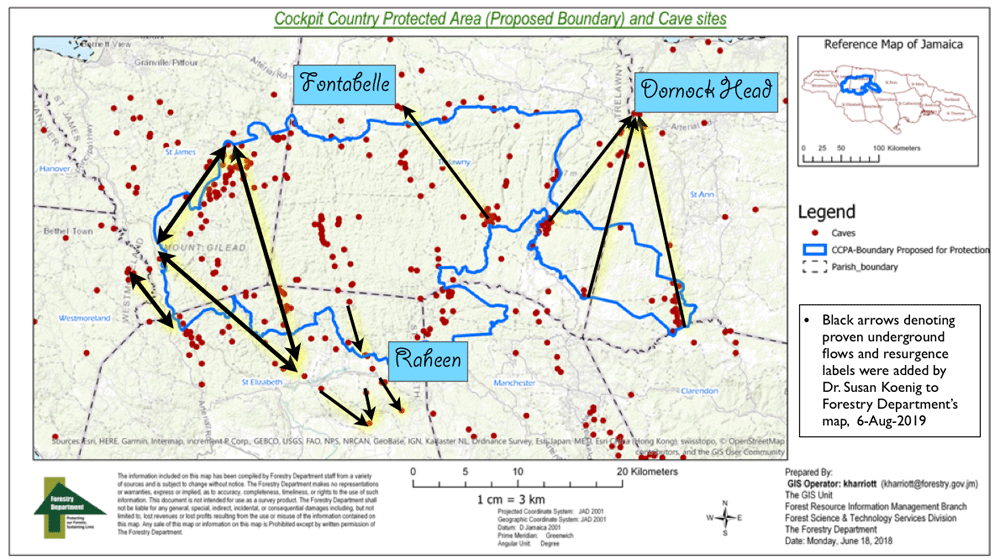 |
The many cave openings shown on the map, however, only give a static representation of what is, in fact, a dynamic system of water moving through the aquifer. A better representation of Cockpit Country hydrology is to include the proven underground flows, descriptions of which have been available from the peer-reviewed literature since the 1970s* and presented in Dr. Alan Fincham’s registry of caves (Jamaica Underground: The Caves, Sinkholes and Underground Rivers of the Island). Additional information about the hydrology of western Cockpit Country is provided by endemic freshwater crabs – their DNA tells us which populations are sharing their genes and which populations remain isolated.
As revealed by proven underground flows, the (Proposed Boundary) of the Cockpit Country Protected Area (CCPA) does not protect the underground hydrology of Cockpit Country.
*REFERENCES
Brown, M.C. and D.C. Ford. 1973. Caves and groundwater patterns in a tropical karst environment: Jamaica, West Indies.
American Journal of Science 273: 622-633. Click here to view article.
Fincham, A.G. 1997. Jamaica Underground: The Caves, Sinkholes and Underground Rivers of the Island. The Press of the University of the West Indies, Barbados, Jamaica, Trinidad and Tobago.
Stemmer M. and C.D. Schubart. 2016. Genetic analyses determine connectivity among cave and surface populations of the Jamaican endemic freshwater crab Sesarma fossarum in the Cockpit Country. International Journal of Speleology, 45: 35-41. http://dx.doi.org/10.5038/1827-806X.45.1.1912
| Boundaries Home Page |

